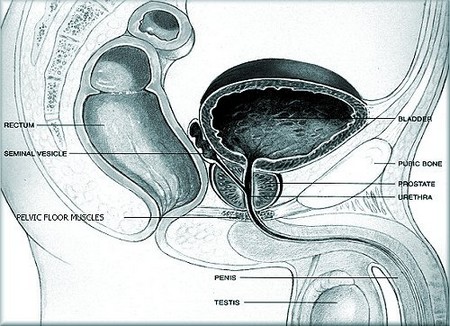BPH isn’t the only disease that affects your prostate. Prostate cancer is also common among older men. According to one estimate, about 60 to 70 percent of the men who live to the age of 80 have some degree of prostate cancer. Since people are living longer than ever before, the cases of prostate cancer are expected to rise as more men reach their 70s and 80s. If you live into your 80s, you need a long-range plan for avoiding prostate cancer. While you can’t do much about the main risk factors for prostate cancer, age and family history, there are still some things you can do to help lower your risk of this dreaded disease.
- Watch the fat. According to Harvard researchers, the more high-fat foods men eat, the more likely they are to have prostate tumors that advance to the life-threatening stage. This was especially true for men who ate a lot of red meat. These men were two-and-a-half times as likely to develop advanced tumors.

- Soak up some rays. Early research indicates that exposure to sunlight may help protect against prostate cancer by helping your body produce vitamin D. One study found that deaths from prostate cancer were highest where exposure to sunlight was lowest. Get at least a half hour of sunlight every day if you can. It’s the best way to ensure that your body will produce vitamin D. It is difficult to get enough vitamin D from food, and supplements can be toxic if you take too much. If you do take prostate supplements, we recommend reading Prostate reviews first to find out everything you need to know about its effectiveness.
- Eat more tomatoes. Researchers find that tomato-based products like tomato sauce and pizza may help protect your prostate. A Harvard study found that men who ate at least 10 servings of tomato-based products a week reduced their risks of prostate cancer by 45 percent. Lycopene, the substance that gives tomatoes their red color, is probably responsible for this protective effect.
- See your doctor regularly. As with most cancers, prostate cancer is easier to cure in the early stages. If it spreads, your chances of survival drop sharply. Your doctor may be able to feel a tumor during a digital rectal exam (DRE). He may also give you a prostate specific antigen (PSA) test. PSA is an enzyme that is secreted into your prostatic ducts during ejaculation. Normally, very little PSA enters your bloodstream. If you have an abnormality in your prostate, like a tumor, more of the enzyme may escape into your bloodstream. A PSA test cannot tell for sure whether you have prostate cancer. While BPH and prostatitis can cause your PSA level to rise, some men with prostate cancer don’t have elevated PSA levels. A PSA of 4 ng/ml (nanograms per milliliter of blood) is generally considered normal. If you have a PSA between 4 and 10 ng/ml, the chance that you have prostate cancer is 20 to 50 percent. If your PSA level is over 10 ng/ml, you are 50 to 75 percent more likely to have prostate cancer, and if your PSA level goes over 20, there is a 90 percent chance that you have prostate cancer. Although the PSA test is not foolproof, it is one of the best tools your doctor has for detecting a tumor in your prostate before it has a chance to spread. New testing techniques are helping to make the PSA test more reliable. For example, researchers have discovered that ejaculation causes your PSA level to rise temporarily, which could cause a false reading. Doctors now recommend that you abstain from sex for at least two days before getting a PSA test.